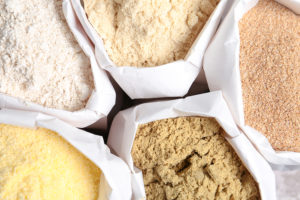 For the fifth time, more than 50 experts from the Whole Foods team came together to forecast the top food and beverage trends of the coming year. Among their predictions were a few trends that could impact and inspire the baking industry in 2020.
For the fifth time, more than 50 experts from the Whole Foods team came together to forecast the top food and beverage trends of the coming year. Among their predictions were a few trends that could impact and inspire the baking industry in 2020.
Regenerative agriculture
Consumers are still seeking a greater level of transparency from the brands they buy. And as they learn more about each step of the journey from farm to table, they expect to find practices and processes that are not only healthier for people, but also beneficial for the environment.
Whole Foods anticipates that the next thing consumers will want from brands is evidence of regenerative agriculture. Though regenerative agriculture has multiple definitions, Whole Foods says it’s about adopting “farming and grazing practices that restore degraded soil, improve biodiversity, and increase carbon capture to create long-lasting environmental benefits, such as positively impacting climate change.”
As we head into 2020, these agricultural methods are likely to become part of what consumers look for when researching food companies.
A growing selection of flours
Looking to add something unique to a recipe? Now is a great time to try some new flours! These days, there is no shortage of flour options for adventurous bakers to try, and it seems like more are on the way in 2020.
A taste for international flavors is bringing flours made from ancient grains to the bakery. And there are some rising stars in the mix, too — from fruit and vegetable flours like cauliflower, coconut, and banana to a wide variety of nut and seed blends. We may also see more “super” flours that add more fiber and protein to baked goods.
Sweet possibilities
Flour isn’t the only area where baking opportunities are growing. In the coming months, bakers can look beyond the standard sweeteners of sugar, stevia, maple syrup, and honey and explore other sources like pomegranate, monk fruit, dates, and coconut.
For those looking for an alternative to the richness of molasses or honey, starch-based syrups from sorghum or sweet potato may be the answer. We could also see more recipes made with Swerve, a zero-calorie combination of erythritol, fruit, and root vegetables. Available in granular, confectioners’, and brown formats, bakers can use the same amount of Swerve in a recipe as they would sugar.
Whether it’s to pursue transparency or discover new recipes, these are some of the baking trends to watch as we move into the new year.

